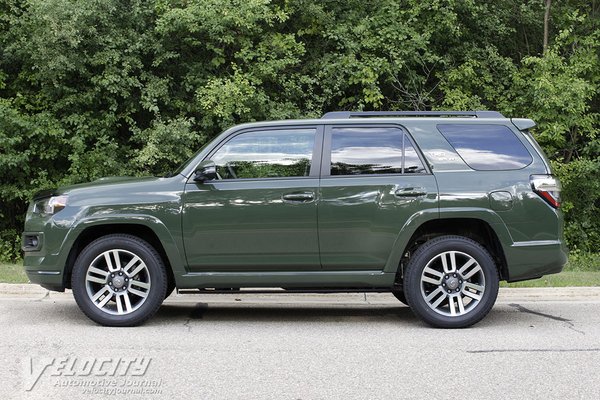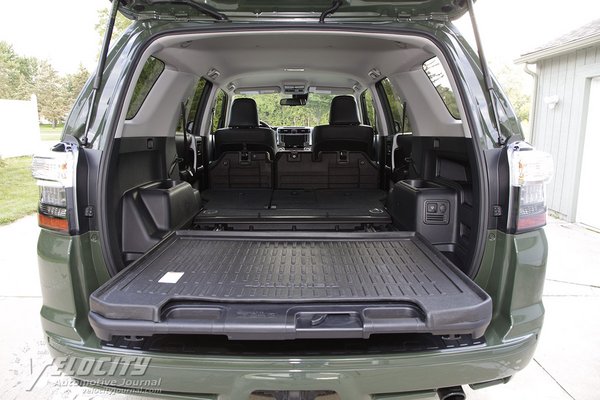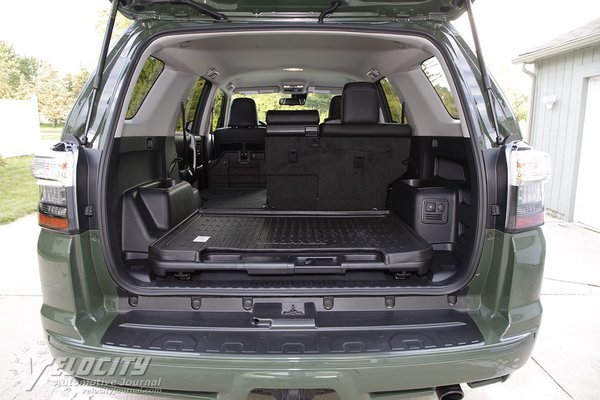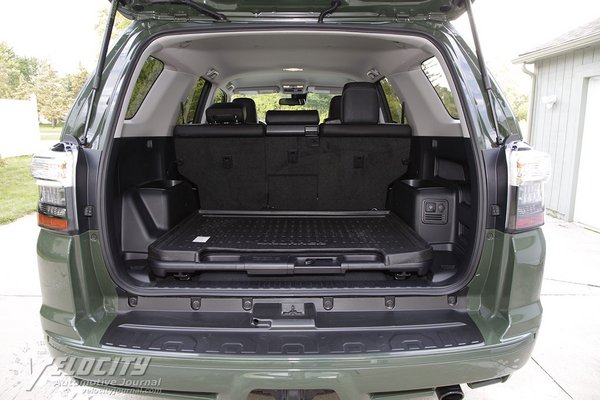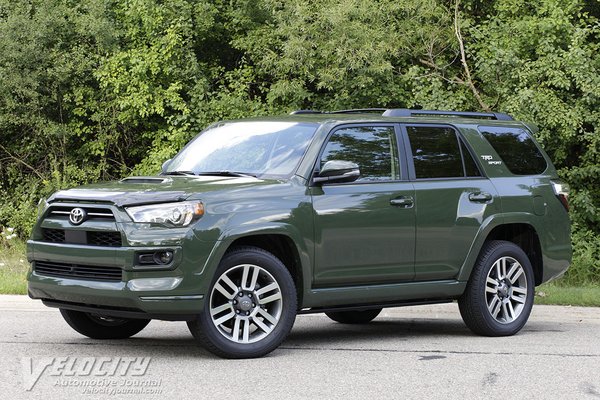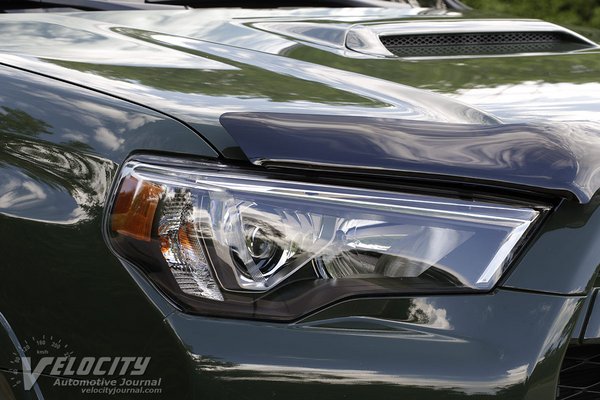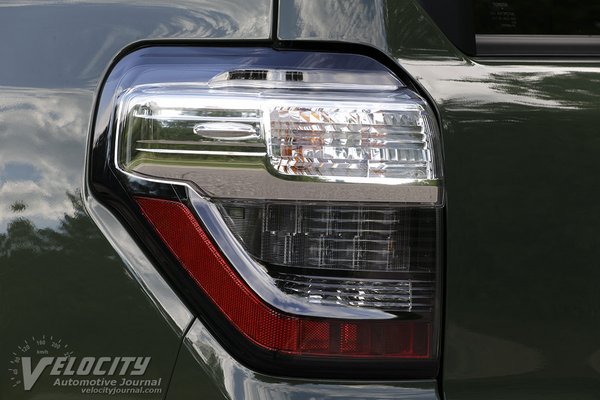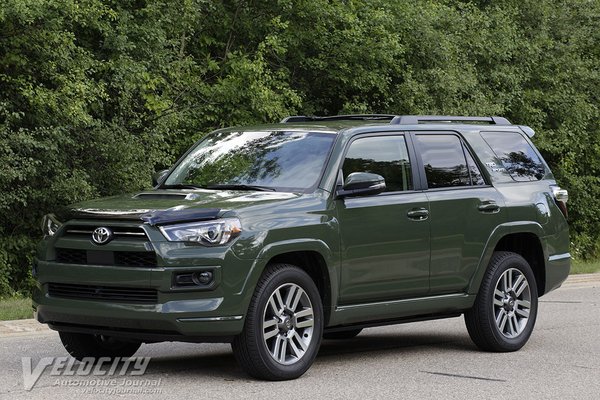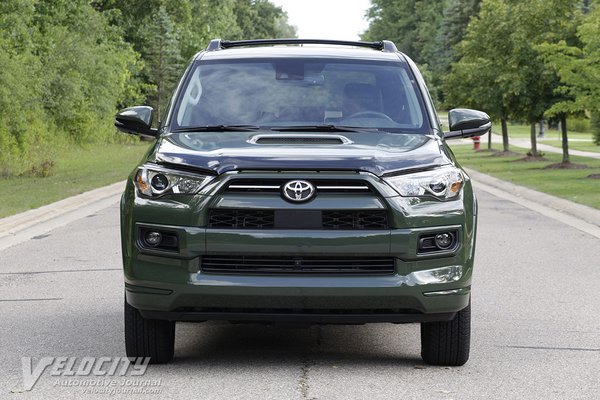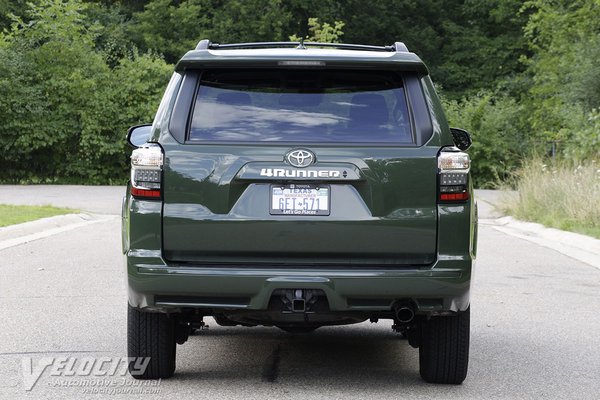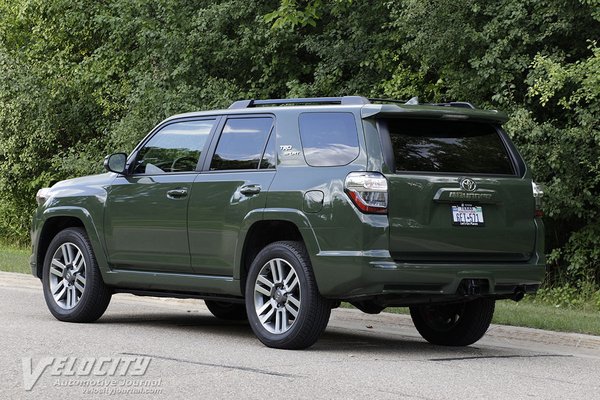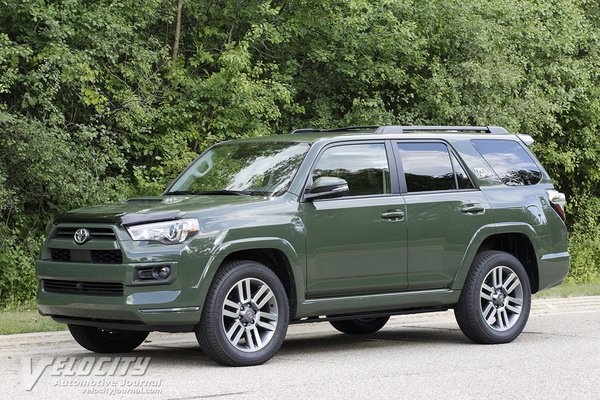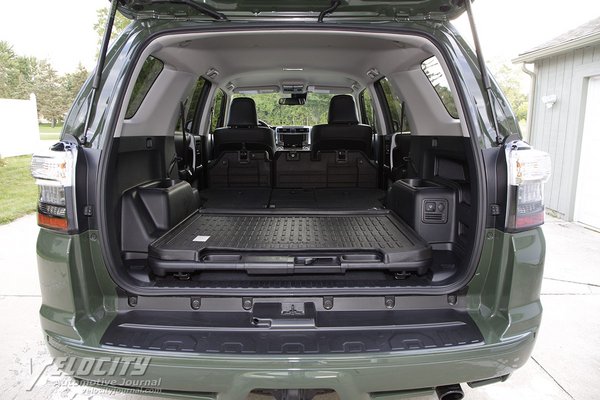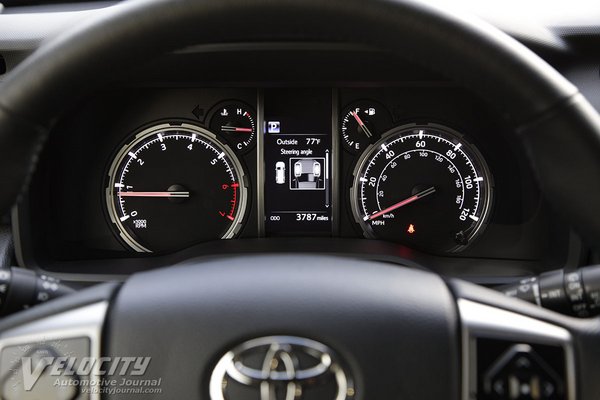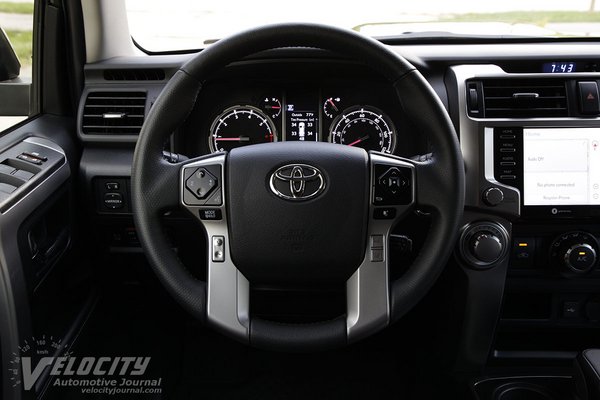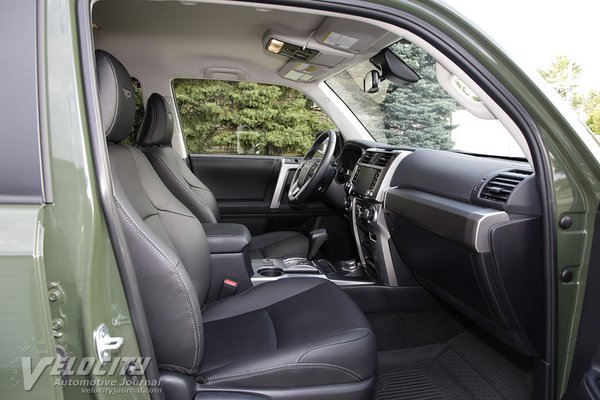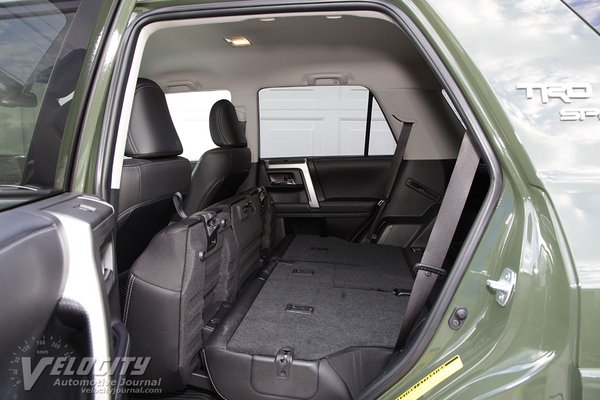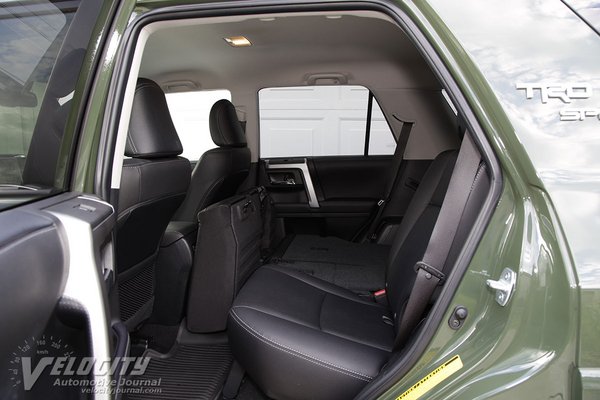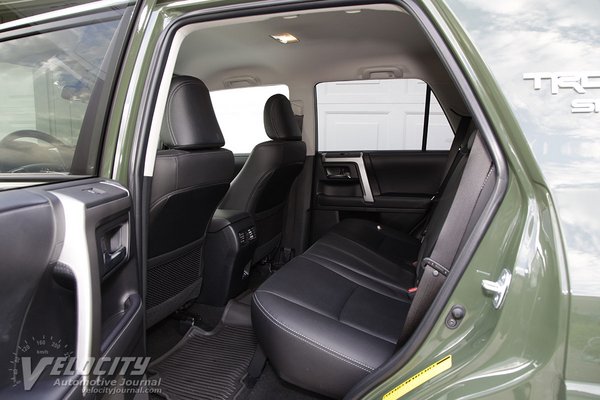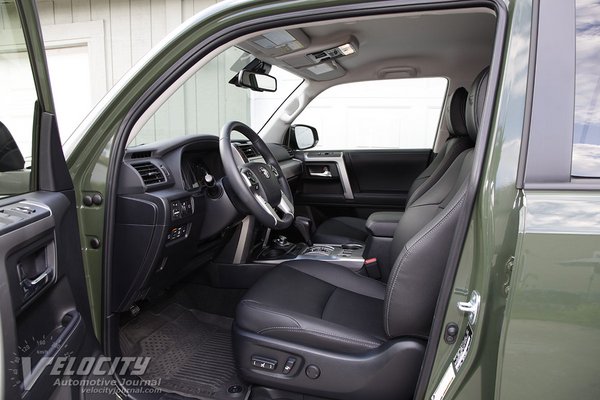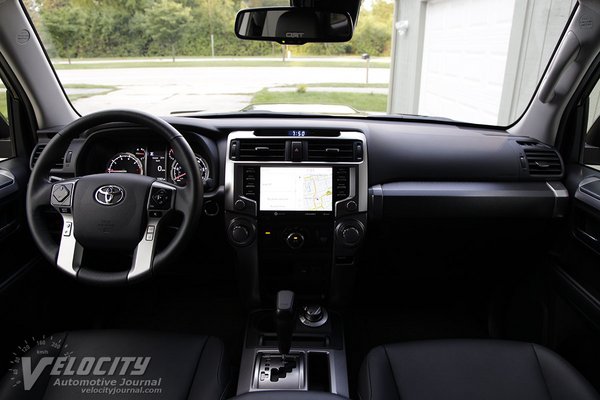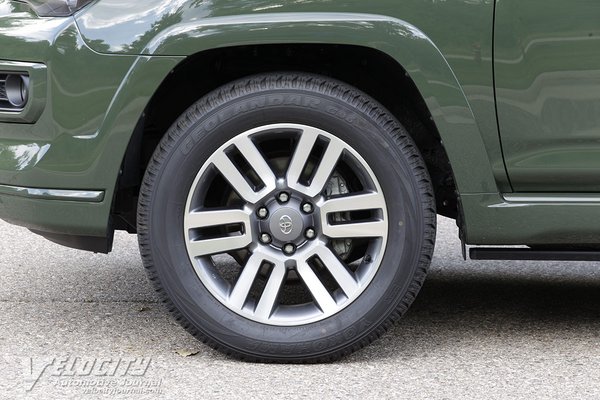2022 Toyota 4Runner TRD Sport
02/06/2023
Shahed Hussain
The 4Runner has been in Toyota's lineup for nearly 40 years, yet has never deviated from its truck-based roots. As most of its competitors have transformed into crossovers, the 4Runner stays true to its roots as an off-road capable SUV. Although exterior styling and powertrain have remained essentially unchanged since 2014, Toyota has updated the 4Runner with current connectivity and safety technology enhancements.
Toyota sells the 2022 4Runner in nine versions, starting from the base SR5 ($36,765) to the TRD Pro ($50,745). Each 4Runner model is equipped and tuned for greater on-road or off-road capability. In the 2023 lineup, Toyota added a 40th Anniversary Special Edition. Our test vehicle was a 2022 TRD Sport 4WD ($42,025) intended primarily for paved roads, but retaining the ability to venture onto gravel and dirt trails. Options include Premium Audio ($1,585), Sliding Rear Cargo Deck ($350), Automatic Running Boards ($1,500), Technology Package ($1,310), All Weather Floor Liners ($169), Cargo Tray ($100), Roof Rack Cross Bars ($185), Cargo Cover ($179), LED foglights ($169), Door Edge Guard ($79), Hood Protector ($165), Black Exhaust Tip ($100). Adding the $1,215 delivery totaled up to $48,631. Significant equipment includes LED headlights, LED foglamps, tow hitch receiver, 8-way power driver's seat, power sliding rear window, 8-in. touchscreen, navigation, Android Auto, Apple CarPlay, Connected Service - Safety Connect, Wi-Fi Connect, and 8-speaker audio system. Standard active safety technologies include: pre-collision system, lane departure alert, dynamic radar cruise control, vehicle stability control, and hill start assist control
All 4Runners are powered by a 4.0L V-6 mated to a 5-speed automatic. The fuel-injected DOHC all-aluminum V-6 is rated at 270-bhp @ 5,600 RPM and 278 lb.-ft. @ 4,400 RPM. Although other competitors are equipped with 6 or 8-speed gearboxes, the 4Runner still uses a wide-ratio 5-speed automatic coupled to a 3.727:1 final drive ratio. A part-time 4WD system with a 2-speed transfer case sends power to the rear or all four wheels. Fuel consumption is estimated at 17/20 MPG (4WD). We averaged 18-20 MPG in mixed urban and highway driving.
As with most serious SUVs, the 4Runner has an independent front and solid axle rear suspension on a body-on-frame platform. At the front is a double-wishbone layout with coil springs, dampers and stabilizer bar. The rear suspension consists of coil springs, dampers, four locating links, lateral rod and a stabilizer bar. Toyota equips the TRD Sport with its X-REAS active damper suspension designed to enhance on road handling. Instead of 17-in. alloy wheels on most other 4Runners, Toyota fits the TRD Sport with 20-inch diameter alloy wheels on P245/60R20 Yokohama Geolandar G96 tires. A full-size spare tire is standard. The power-assisted rack-and-pinion steering is geared for 2.7 turns lock-to-lock. Brakes are ventilated discs at all four wheels: 13.3 in. dia. rotors in front and 12.3 in dia. rotors in the rear. Ground clearance is an impressive 9.6 inches, and approach/departure angles are 33/26 degrees. Toyota rates all 4Runner models for a 5,000 lbs. towing capacity. Curb weight ranges from 4,400 lbs. (SR5 4x2) to 4,805 lbs. (Limited 4x4).
The 4Runner's interior reflects its utilitarian heritage: durable hard plastic covers the dashboard, but touch points such as door armrests and upper door trim are padded. The gauge cluster consists of an analog tachometer and speedometer, accompanied by smaller coolant and fuel level meters. A multi-function trip computer display shows vehicle status. The perforated leather-wrapped steering wheel has integrated mobile phone, trip computer and audio controls. On the center stack are knurled knobs for audio and climate control systems. The infotainment touchscreen is flanked with buttons and knobs for quick access to frequently used settings. A 12V outlet and a USB port enable charging and connectivity for mobile devices. Under the center armrest is a large bin and an additional 12V outlet. The gated shifter for the 5-speed automatic has Sport and manual gear select modes.
Toyota fits the TRD Sport's Softex(R) (synthetic leather) seats with stitched TRD logos, plus TRD floor mats and shift knob. Front seats comfort is acceptable, but the flat bolsters provide minimal lateral support. The driver benefits from 8-way power adjustability plus lumbar support, but the front passenger only gets 4-way manual settings. Rear seating is spacious for two occupants with generous legroom, but the center rear position is only suitable for short trips due to the hard seatback. Both front and rear headroom are sufficient for 6-ft. tall occupants. Dual HVAC vents and USB ports in the rear console should minimize complaints from back seat passengers. The power retracting window in the rear hatch allows convenient interior access and loading. A 120V AC and a 12V DC outlet in the rear cargo area deliver power for small appliances and electronics. The optional sliding rear cargo deck enables easy access to bulky coolers and camping gear.
The 4Runner's V-6 and 5-speed automatic deliver adequate acceleration in urban driving conditions when lightly laden. A 2+ ton curb weight, combined with a large gap between first (3.52:1) and second gear (2.042:1) ratios contribute to the 4Runner's leisurely part-throttle acceleration. On the highway, moderate acceleration above 70 MPH usually triggers a downshift into fourth gear. Replacing the 5-speed automatic with the 6-speed gearbox from the Tacoma would improve both acceleration and fuel consumption.
Equipping the 4Runner Sport with larger 20-in wheels and tires significantly enhances handling and steering precision, considering the aged platform. On tattered pavement, this Toyota drives like a typical body-on-frame SUV, thumping over bumps and potholes. The 4-link rear suspension constrains the solid axle effectively, but large bumps will cause significant axle hop. However, on smooth surfaces, the 4Runner has a surprisingly compliant, comfortable ride. Around curves, the Toyota understeers predictably as the body leans over on the outside tires. Spongy brake pedal feel doesn't endow much confidence, but the vented discs deliver decent braking performance when lightly loaded.
In the nearly 40 years of 4Runner production, the SUV market has evolved and expanded to encompass a wide range of vehicles and capabilities. Although Toyota has added new SUVs to its lineup, the 4Runner continues to deliver for its customers, despite its dated chassis and powertrain. Although midsize truck-based sport utilities have experienced a recent resurgence, the 4Runner is the only SUV in its class that never left the market.

